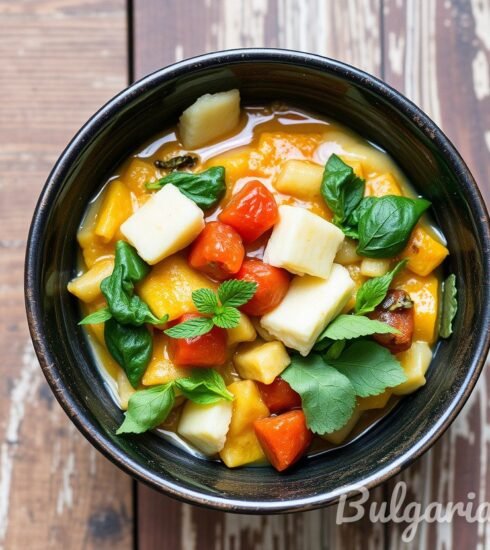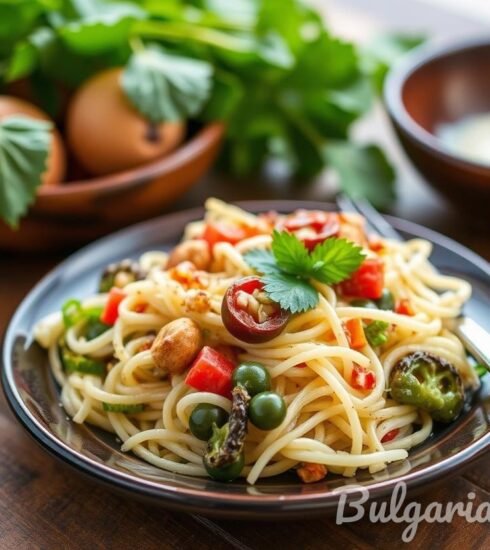Exploring Bulgarias Culinary Heritage: Taste the Flavors and Legends of a Timeless Tradition
Tasting Time: A Culinary Adventure Through Bulgaria’s Heritage Recipes and Local Legends
Bulgaria boasts a rich tapestry of culinary heritage that reflects its diverse cultural influences and regional specialties. The country’s food narrative integrates aromas and flavors from Mediterranean, Ottoman, and Slavic traditions, resulting in a robust culinary landscape that offers something for everyone. As you embark on this gastronomic journey through Bulgaria, you’ll discover not only the exceptional recipes but also the legends and stories that have shaped these traditional dishes.
The Foundation of Bulgaria’s Culinary Heritage
Understanding any nation’s cuisine requires delving into the historical backdrop that has influenced its gastronomic practices. Bulgaria’s culinary heritage is no exception. The introduction of different spices and cooking techniques from various cultures laid the groundwork for many traditional dishes. Bulgaria transitioned from ancient Thracian practices to Byzantine influences and then Ottoman culinary styles, which combined a variety of ingredients.
This blending of culinary traditions gave rise to some of the most recognized components of Bulgaria’s culinary heritage, such as:
- Sourdough bread – A staple in Bulgarian households that is often baked in clay ovens.
- Fermented vegetables – Including pickled cabbage (kynkova zeli) and peppers.
- Cheese – Notably feta (sirene) and its variations.
- Meat dishes – Featuring pork, lamb, and chicken, often marinated and grilled.
The focus on local ingredients further strengthens the identity of bulgaria culinary heritage, making the connection between land and plate. Bulgaria’s varied climate and fertile soil allow for a range of vegetables, cereals, and dairy products, which form the backbone of the Bulgarian diet.
Regional Specialties: A Taste of Diversity
One of the most fascinating aspects of Bulgaria’s food culture is the regional diversity that exists within its borders. Each geographical area boasts unique flavors, ingredients, and recipes that highlight its specific local traditions. Let’s explore some of the notable regional specialties that resonate with locals and visitors alike.
1. Thracian Breakfast: Banitsa
From the Thrace region, banitsa is an iconic pastry that consists of layers of dough filled with a mixture of cheese, eggs, and yogurt. This delightful dish is traditionally prepared and enjoyed for breakfast or as a snack throughout the day.

Key Ingredients:
- Phyllo dough
- Feta cheese
- Vegetables (optional)
- Eggs
- Yogurt
The preparation of banitsa is more than just baking; it is steeped in tradition. There is an interesting legend surrounding banitsa, where it is said that if you make banitsa on a special occasion, such as New Year, it can bring good luck for the upcoming year.
2. The Mystique of Shopska Salad
Hierarchically layered, Shopska salad represents the Burgas region and is known for its blend of fresh ingredients. Typically, this salad consists of diced tomatoes, cucumbers, onions, and roasted peppers topped with crumbled feta cheese and drizzled with sunflower oil.
Nutrition Facts:
- Rich in vitamins
- Low in calories
- Good source of antioxidants
The creation of Shopska salad is accompanied by a local legend that claims it was invented to celebrate the unique colors of the Bulgarian flag. The red of tomatoes, white of cheese, and green of peppers symbolize the country’s national identity.
Time-Honored Cooking Techniques
More than just the recipes, the techniques used in Bulgarian cooking reflect a deep-rooted respect for tradition. Many recipes are prepared using methods passed down through generations. Here are some typical cooking techniques pertinent to bulgaria culinary heritage:

- Slow-Cooking: Many meat dishes are slow-cooked to achieve tenderness and flavor.
- Pickling: A vital method for preserving vegetables, enhancing their taste and nutritional value.
- Grilling: Especially popular in the warmer months, meats and vegetables are grilled over open flames, imparting a smoky depth to the dishes.
- Fermenting: Used to create traditional dairy products, like yogurt and the locally beloved katak.
Each culinary procedure that is followed embodies the creativity and resourcefulness of Bulgarian cooks, serving as a testament to cultural heritage.
Seasonal Celebrations and Food Festivals
Bulgarian cuisine deeply intertwines with festivities and seasonal celebrations. Food plays a central role in significant national holidays and regional festivals, where traditional recipes take center stage. The most notable festivals include:
- The Rose Festival: Held in Kazanlak, celebrates the rose-harvesting season with various rose-based dishes.
- Wine Festivals: Celebrated in many regions, highlighting the capabilities of Bulgarian vineyards and the traditional grape vines.
- Christmas and Easter: Traditional meals pulsate with classic recipes, where each dish carries a story or significance.
Each festival showcases how food binds communities through rituals and shared experiences, showcasing the authentic spirit of bulgaria culinary heritage.
Featured Recipes from Bulgarian Cuisine
To truly indulge in Bulgaria’s culinary adventure, let’s explore some signature recipes. By preparing these dishes at home, you can experience the flavors and stories they offer.
1. Traditional Bulgarian Yogurt
This probiotic-rich yogurt is a staple in Bulgarian diets. Preparing it at home can greatly enhance your culinary repertoire!
Ingredients:
- 2 liters of milk
- 1/2 cup of yogurt with live cultures
- Heat the milk until it is just below boiling.
- Let it cool until lukewarm, then stir in the yogurt.
- Cover and let sit in a warm place for 6-12 hours, or until set.
This yogurt is not only delicious but is also a key ingredient in many Bulgarian dishes, particularly in salads and dips.
2. Slow-Baked Moussaka
This Bulgarian version of the classic moussaka incorporates potatoes and minced meat, marked by a creamy béchamel sauce on top.
Ingredients:- 300g ground lamb or beef
- 500g potatoes, sliced
- 1 onion, chopped
- 2 eggs
- 500ml milk
- Flour for béchamel sauce
- Brown the meat with onions and season it to taste.
- Layer the sliced potatoes and meat mixture in a baking dish.
- Prepare the béchamel sauce using butter, flour, and milk, then pour it over the layered dish.
- Bake in a preheated oven at 180°C for about an hour.
This dish is rich and comforting, showcasing Bulgarian flavors beautifully.

Exploring the Legends Behind the Food
In Bulgarian culture, every dish is often associated with specific myths or legends that lend the food its significance. Understanding these tales enriches the culinary experience and connects us to the nation’s past.
The Legend of Kachkavalski Cheese
One popular tale recounts how the first cheese was created by an accidental fermentation of milk left out in the sun. This cheese became known as kachkaval, and it is said that cheese makers prayed to the gods for the best cheese, and so this was born. Today, kachkaval is used in many recipes, making it an essential staple in Bulgarian cuisine.
The Feast of Baba Marta
An interesting and cherished tradition linked to good fortune is Baba Marta, celebrated on March 1st. Bulgarians exchange martenitsi (red and white yarn bracelets) and prepare special dishes known as “martenički”. The food served during this celebration emphasizes a fresh start and good health, aligning with the onset of spring.
This cultural significance imbues each bite with a story, blending culinary artistry with folklore and challenges our understanding of food as merely sustenance.
The Future of Bulgaria’s Culinary Heritage
As Bulgaria continues to grow in the culinary world, chefs are innovating while honoring traditional recipes and methods. Global influences are being integrated into the cuisine, creating a hybrid dynamic that retains the essence of bulgaria culinary heritage while appealing to contemporary tastes.
Bulgaria’s rising reputation in gastronomical tourism is an avenue for the world to discover its rich culinary delights. Young chefs are now leading the charge, diving deep into historical recipes and reviving those that have almost faded into obscurity. This keeps the culinary heritage vibrant while allowing new generations to connect with their roots through cooking.
Conclusion
Beyond temporary dining experiences, Bulgaria’s culinary heritage is a journey worth taking. Each dish serves as a window into the national psyche and traditions that define the Bulgarian people. As you explore these remarkable recipes and their accompanying stories, you not only experience a unique taste sensation but also become a participant in the timeless narrative of Bulgarian culture.
For more in-depth understanding, you can also check our articles on Bulgaria’s Food Culture and Bulgarian Culinary Tours.






